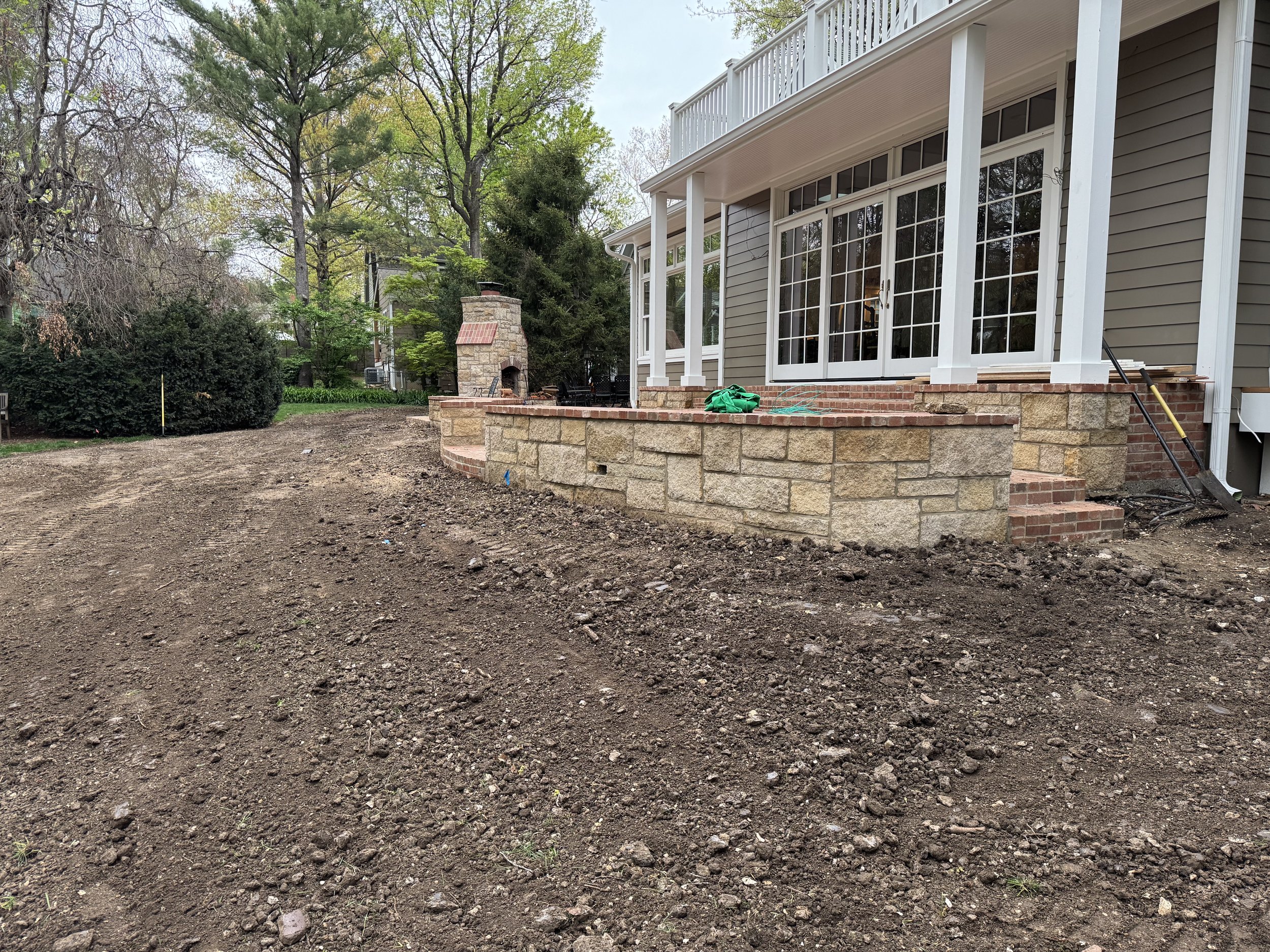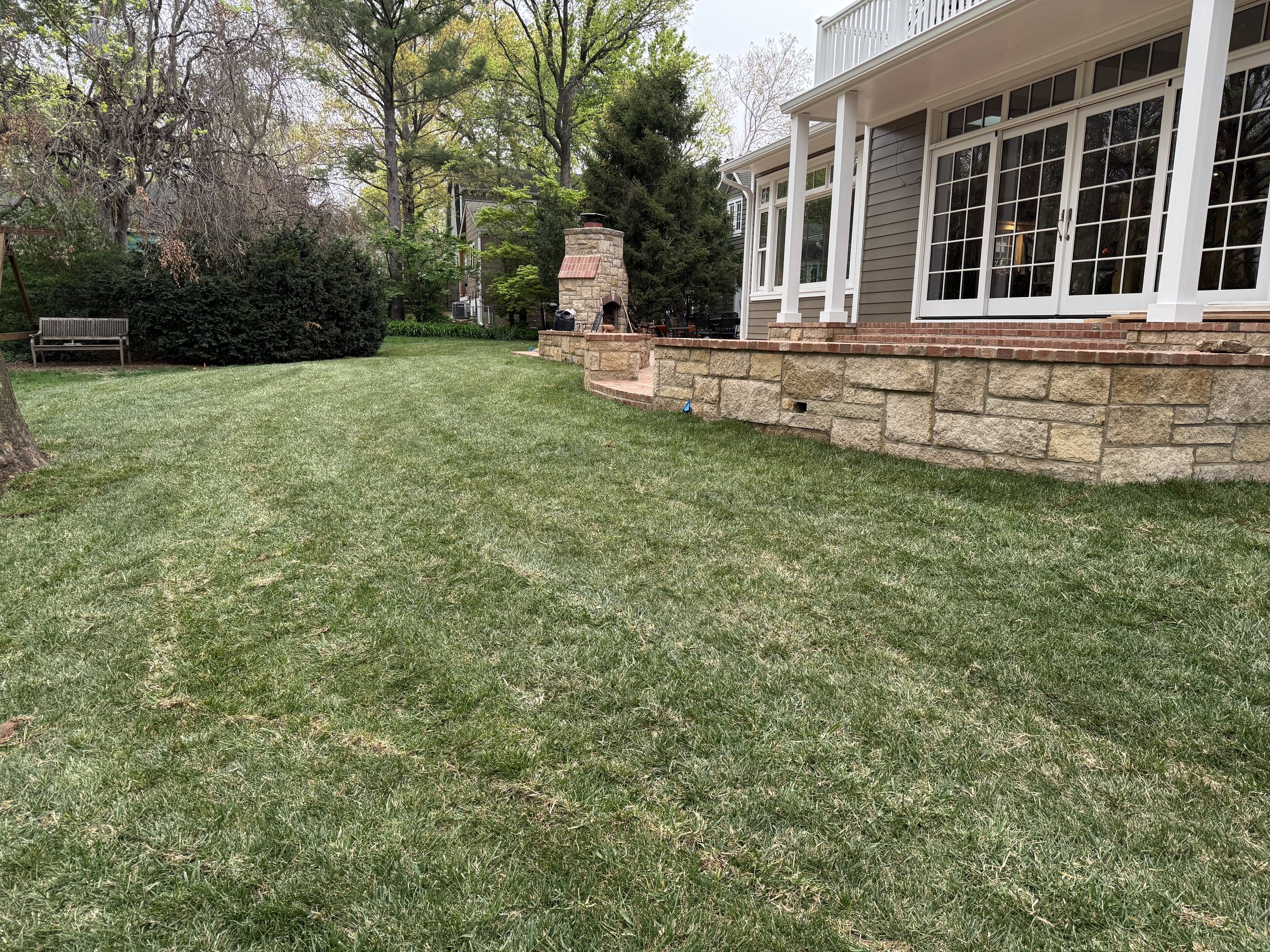
Sod Installation in Overland Park, Olathe, Spring Hill and more…
At Back To Nature Lawn, we only use the highest quality sod, locally sourced from a from a reputable family farm. Our expert team is well trained and utilizes the latest technology and equipment to make sure the job is done right.
Why We Use Big Rolls of Sod
At Back to Nature, we choose to install big rolls of sod rather than the smaller, traditional rolls—and for good reason. Big rolls create fewer seams, which means the finished lawn has a smoother, more uniform appearance. Fewer visible lines between pieces result in a cleaner, more polished look that's far less noticeable in your yard.
Not only does this method provide a better aesthetic, but it also promotes a healthier, faster-establishing lawn due to better soil contact and fewer gaps for weeds to take hold.
When it comes to giving your lawn the best start possible, big rolls simply deliver a higher-quality, more professional finish—something we take pride in with every project.
New Construction and turf replacement
Just built a new house and need the whole yard done? Not a problem! We’re happy to work with you and your builder on this last step to finishing your beautiful home.
Backyard wedding coming up and the cable company just left a trench all the way across your backyard? You had a new pool or patio installed and the contractors left a path of destruction all the way from the street to the backyard… Or maybe the neighbor’s pig got out and wrecked your entire yard, front and back, in a single night! (Yes, that really does happen!) Don’t worry, we’ve got you covered. In most cases, we can remove and replace your grass before you even get home from work.
Hear from our customers
Mike D.
⭐⭐⭐⭐⭐
“Richard and his staff are amazing! I am a remodeling contractor and have used them a couple of times to lay sod. They do a very professional job and are perfectionist! Highly recommend these guys!”
Matthew S.
⭐⭐⭐⭐⭐
“Richard and Jessica helped me along the way for sodding around my new pool. Everything turned out great. We had good communication along the way. Thanks! I would recommend for sod for sure.”
Michael K.
⭐⭐⭐⭐⭐
“My experience has been great. Very professional, always neat and in uniform. Would highly recommend. Nice to have one company that can do it all”




How To Care For Your Sod
New Sod Care:
New sod is perishable and must be installed immediately to ensure a successful, healthy lawn. It is not necessary to water the dirt prior to laying your sod. (This just makes you work in the mud). Water your new sod immediately after installation.
AFTER NEW SOD HAS BEEN INSTALLED – BEGIN WATERING IMMEDIATELY!
Please stay off new sod until after the first mowing. Proper watering of sod is essential for root establishment. The day of installation, enough water should be applied to penetrate the sod and 3 to 4 inches of soil.
From this point on, keep your sod and soil moist throughout the day. The roots are short so the sod cannot withstand large amounts of water at a single time. Other than the first day, the ground under the sod should never be soggy. Usually watering four to six times during the day, for approximately ten to fifteen minutes each time, is required until the roots have been established. Root establishment will usually begin within seven to fourteen days depending on the time of year your sod is installed and your environment.
The length of each watering cycle and how often you need to water will depend on your soil type, outside temperature, wind or sunny vs shady conditions. You will also need to water more frequently in areas beside driveways, sidewalks and other hardscape features, and near buildings (these reflect heat that will dry out the sod). A clay type soil may need five minutes, four times a day compared to a well-drained soil which may need seven minutes, five times a day. You have to judge the minutes given, but here is a tip: If the water is standing under the sod for more than just a few minutes after an irrigation set has finished or if the soil is soggy, you are probably giving the sod too much water at one time.
The goal during the first few weeks is to keep the sod and soil beneath the sod moist at all times.
The first mowing should be approximately 14 days after the sod has been installed. In the cooler months you may need to wait longer for the roots to establish prior to mowing. Mow your new sod on the tallest mower setting on your mower. Be careful when walking across your sod to mow – it may not be fully rooted and you don’t want to move the sod.
AFTER 2-3 WEEKS:
If the weather allows you can start to reduce the frequency of times you water at a gradual pace. You can validate the establishment of the roots by pulling up a corner of the sod, and if you feel some resistance – now is the time to start watering longer times to water deeper.
In another couple weeks or so you can repeat this process until you are only watering just once a day. Deeper, less frequent watering will help roots stretch down deeper and establish quickly into the soil.
Fertilize your new sod approximately four to six weeks after installation to ensure continued establishment of the roots.
Now that your sod is fully rooted----don’t just quit taking care of it. Once your new lawn is well established, you’ll want to develop a long-term maintenance program. It is important to know when and how to mow, fertilize, aerate, control thatch levels, monitor and control weeds, insects and diseases, and irrigate your new lawn.
Water and nutrients are essential to all life to stay healthy!
